-
 bitcoin
bitcoin $122025.899241 USD
-2.12% -
 ethereum
ethereum $4488.068729 USD
-4.11% -
 bnb
bnb $1315.348019 USD
8.65% -
 tether
tether $1.000457 USD
0.03% -
 xrp
xrp $2.875326 USD
-3.69% -
 solana
solana $222.043604 USD
-4.07% -
 usd-coin
usd-coin $0.999682 USD
0.00% -
 dogecoin
dogecoin $0.249887 USD
-5.62% -
 tron
tron $0.337379 USD
-2.59% -
 cardano
cardano $0.827763 USD
-5.06% -
 hyperliquid
hyperliquid $45.774531 USD
-2.43% -
 chainlink
chainlink $22.079309 USD
-5.87% -
 ethena-usde
ethena-usde $1.000156 USD
0.02% -
 sui
sui $3.482566 USD
-3.57% -
 stellar
stellar $0.386982 USD
-4.92%
How Do ETH ETFs Function?
An ETH ETF lets investors gain exposure to Ethereum’s price without owning the crypto directly, offering regulated, stock-like access to ETH’s market performance.
Aug 09, 2025 at 05:42 am
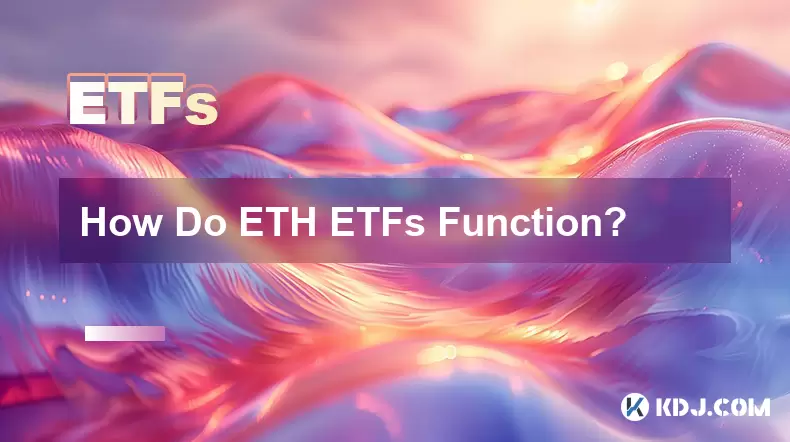
Understanding the Structure of ETH ETFs
An ETH ETF (Ethereum Exchange-Traded Fund) is a financial product that allows investors to gain exposure to the price movements of Ethereum (ETH) without directly owning the cryptocurrency. These funds are listed on traditional stock exchanges and function similarly to other ETFs, such as those tracking gold or stock indices. The underlying mechanism involves the ETF issuer holding ETH—either directly or through regulated futures contracts—on behalf of investors. Shares of the ETF are then created and traded publicly. Each share represents a fractional interest in the ETH held by the fund.
The creation and redemption of shares are managed through Authorized Participants (APs), large financial institutions that interact directly with the ETF issuer. When demand increases, APs deliver cash or ETH to the issuer in exchange for new ETF shares. Conversely, when investors sell shares, APs can redeem them for the underlying ETH or cash. This mechanism helps maintain the market price of the ETF close to its Net Asset Value (NAV).
Regulatory oversight is a critical component. In jurisdictions like the United States, approval from financial authorities such as the Securities and Exchange Commission (SEC) is required. The SEC evaluates whether the fund has sufficient safeguards against market manipulation and fraud, particularly due to the volatility and decentralized nature of the Ethereum network.
Types of ETH ETFs: Physical vs. Futures-Based
There are primarily two models for ETH ETFs: physically-backed and futures-based. A physically-backed ETH ETF holds actual Ethereum tokens in secure custody solutions, often managed by regulated custodians like Coinbase or BitGo. This structure provides a direct 1:1 correlation with ETH’s spot price. Investors benefit from direct exposure to Ethereum’s price performance, minus management fees.
In contrast, a futures-based ETH ETF does not hold ETH directly. Instead, it invests in Ethereum futures contracts traded on regulated exchanges such as the Chicago Mercantile Exchange (CME). These contracts obligate the buyer to purchase ETH at a predetermined price and date in the future. The ETF rolls over expiring contracts into new ones to maintain continuous exposure. While this model is easier to regulate, it introduces contango and backwardation risks, where future prices may not perfectly track spot prices.
The choice between these models affects performance. Physically-backed ETFs tend to mirror the spot price more accurately, while futures-based ETFs may experience tracking errors over time due to the cost of rolling contracts and market structure differences.
How to Invest in an ETH ETF
Purchasing shares of an ETH ETF follows the same process as buying any stock or ETF on a regulated exchange. Investors need a brokerage account that supports ETF trading. Major platforms like Fidelity, Charles Schwab, and Robinhood offer access to cryptocurrency-related ETFs where available.
- Open a brokerage account and complete the verification process.
- Deposit funds into the account using bank transfers or other supported methods.
- Search for the ETH ETF using its ticker symbol (e.g., “EETH” or “ETHA” — subject to naming conventions approved by regulators).
- Place a buy order, specifying the number of shares or dollar amount.
- Monitor the investment through the brokerage dashboard.
Unlike direct crypto purchases, investors do not manage private keys or use digital wallets. The ETF provider handles custody and security. This reduces the technical burden and eliminates the risk of losing access due to misplaced keys. However, investors are subject to management fees, typically ranging from 0.3% to 1.0% annually, which are deducted from the fund’s assets.
Regulatory and Custody Considerations
The approval and operation of ETH ETFs depend heavily on regulatory clarity. In the U.S., the SEC has historically expressed concerns about market integrity, custody, and investor protection in crypto markets. For an ETH ETF to be approved, the issuer must demonstrate that Ethereum trading occurs on sufficiently transparent and regulated markets and that price manipulation is detectable and preventable.
Custody is another major factor. For physically-backed ETFs, the ETH must be stored in cold storage solutions with robust security protocols. Third-party custodians must be regulated and insured. The fund’s prospectus will detail the custody arrangement, including insurance coverage limits and audit procedures.
Transparency is maintained through regular reporting. ETFs are required to disclose their holdings daily, often through public holdings reports published on the issuer’s website. This allows investors to verify that the fund actually holds the claimed amount of ETH.
Tax Implications of ETH ETF Investments
Investing in an ETH ETF has different tax consequences compared to holding ETH directly. In most jurisdictions, including the U.S., ETF shares are treated as securities, not commodities. This means capital gains taxes apply when shares are sold at a profit. Short-term gains (held under one year) are taxed at ordinary income rates, while long-term gains (held over one year) benefit from lower capital gains rates.
Dividends or distributions from the ETF, if any, are also taxable. However, ETH itself does not generate dividends, so most ETH ETFs do not distribute income. Instead, value appreciation comes from price increases in the underlying asset.
Investors receive a Form 1099-B from their broker after the tax year, detailing proceeds from sales. This must be reported to tax authorities. Using tax-advantaged accounts like IRAs or 401(k)s may alter the tax treatment, but rules vary and professional advice is recommended.
Frequently Asked Questions
Can I convert my ETH ETF shares back into actual Ethereum?No. ETH ETF shares are securities and cannot be redeemed for physical ETH. Redemption is only available to Authorized Participants, and even then, it typically occurs in cash or through in-kind transfers at the institutional level. Retail investors can only sell shares on the open market.
Are ETH ETFs safer than buying Ethereum on a crypto exchange?For some investors, yes. ETH ETFs eliminate the need to manage private keys or worry about exchange hacks. They are subject to traditional financial regulations and often backed by insured custodians. However, they come with management fees and depend on the solvency of the issuing institution.
Do ETH ETFs pay dividends?No. Ethereum does not generate income like dividend-paying stocks. Therefore, ETH ETFs do not distribute regular income. Any returns are derived solely from changes in the share price relative to ETH’s market value.
How do I check how much ETH an ETF actually holds?Reputable ETH ETF issuers publish daily holdings reports on their official websites. These reports list the exact amount of ETH held, the fund’s NAV per share, and the number of outstanding shares. This transparency allows investors to verify the fund’s backing.
Disclaimer:info@kdj.com
The information provided is not trading advice. kdj.com does not assume any responsibility for any investments made based on the information provided in this article. Cryptocurrencies are highly volatile and it is highly recommended that you invest with caution after thorough research!
If you believe that the content used on this website infringes your copyright, please contact us immediately (info@kdj.com) and we will delete it promptly.
- BlockDAG, DOGE, HYPE Sponsorship: Crypto Trends Shaping 2025
- 2025-10-01 00:25:13
- Deutsche Börse and Circle: A StableCoin Adoption Powerhouse in Europe
- 2025-10-01 00:25:13
- BlockDAG's Presale Buzz: Is It the Crypto to Watch in October 2025?
- 2025-10-01 00:30:13
- Bitcoin, Crypto, and IQ: When Genius Meets Digital Gold?
- 2025-10-01 00:30:13
- Stablecoins, American Innovation, and Wallet Tokens: The Next Frontier
- 2025-10-01 00:35:12
- NBU, Coins, and Crypto in Ukraine: A New Yorker's Take
- 2025-10-01 00:45:14
Related knowledge
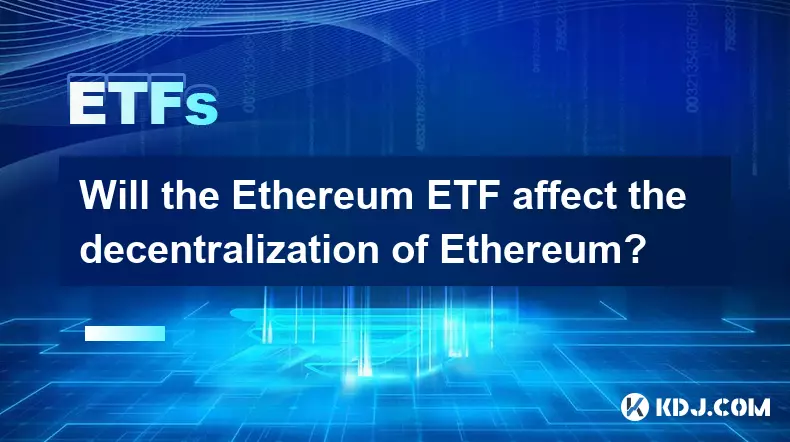
Will the Ethereum ETF affect the decentralization of Ethereum?
Sep 28,2025 at 04:37am
Understanding Ethereum ETFs and Their Structure1. An Ethereum ETF (Exchange-Traded Fund) is a financial product that tracks the price of Ethereum with...
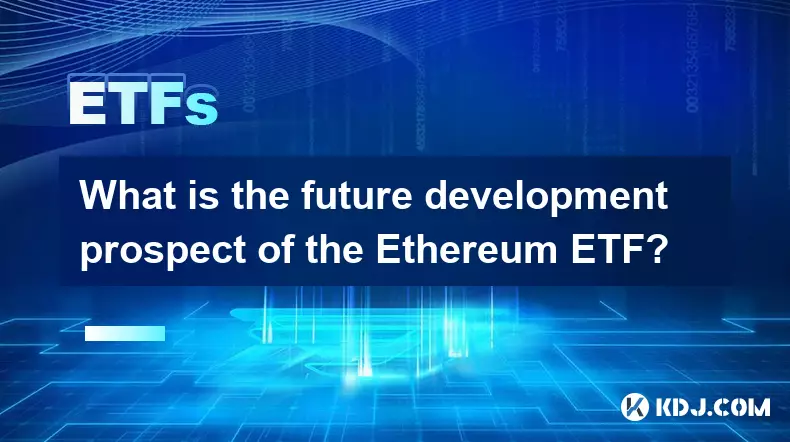
What is the future development prospect of the Ethereum ETF?
Sep 23,2025 at 01:36am
Ethereum ETF and Market Dynamics1. The introduction of an Ethereum ETF has sparked significant interest across the digital asset space. Institutional ...

Is the Ethereum ETF affected by Ethereum gas fees?
Sep 25,2025 at 12:18am
Ethereum ETFs and Their Structural Independence from Gas Fees1. Ethereum Exchange-Traded Funds (ETFs) are financial instruments designed to track the ...
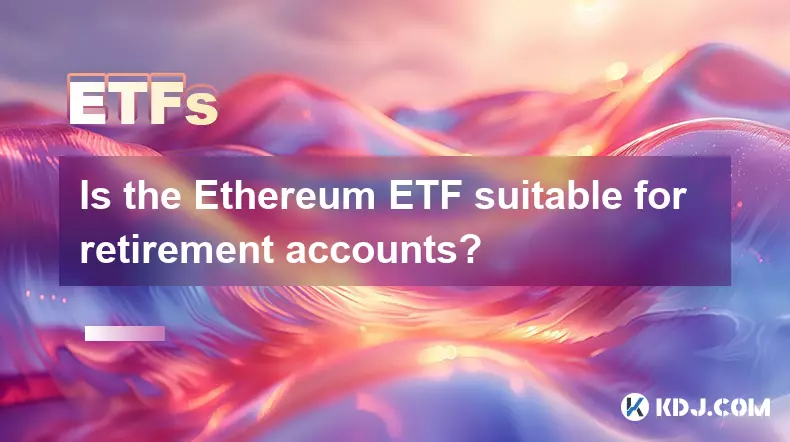
Is the Ethereum ETF suitable for retirement accounts?
Sep 29,2025 at 06:36am
Ethereum ETFs and Their Role in Retirement Planning1. Ethereum Exchange-Traded Funds (ETFs) have emerged as a bridge between traditional finance and d...
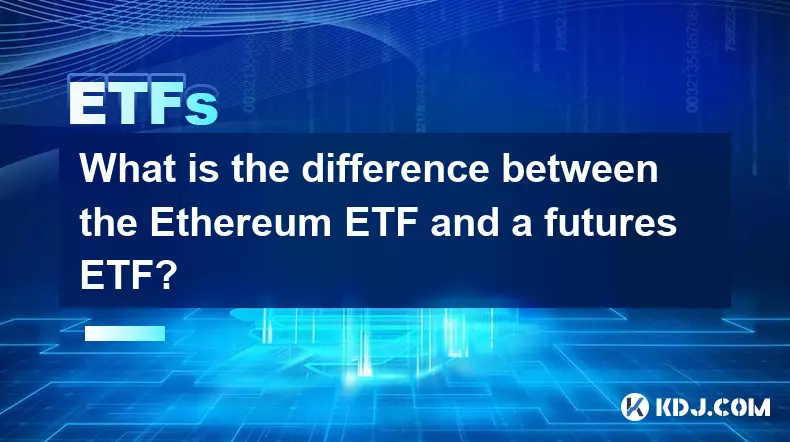
What is the difference between the Ethereum ETF and a futures ETF?
Sep 23,2025 at 06:18am
Bitcoin's Role in Decentralized Finance Evolution1. Bitcoin remains the cornerstone of decentralized finance, serving as a benchmark for value transfe...
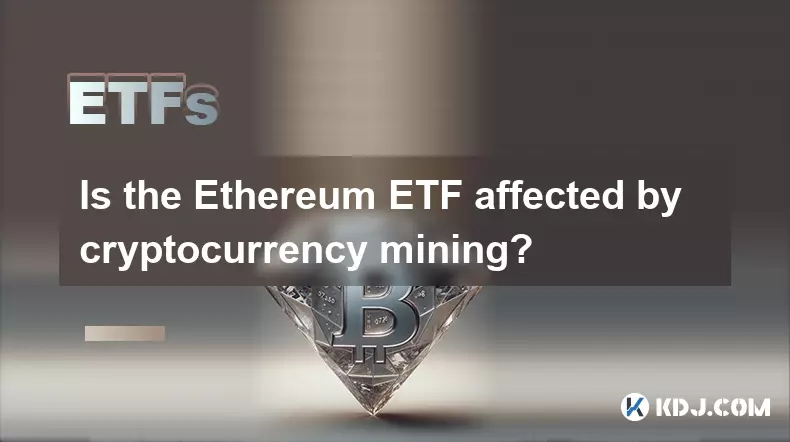
Is the Ethereum ETF affected by cryptocurrency mining?
Sep 23,2025 at 03:37pm
Understanding Ethereum ETFs and Their Market Drivers1. An Ethereum ETF (Exchange-Traded Fund) is a financial product that tracks the price of Ethereum...

Will the Ethereum ETF affect the decentralization of Ethereum?
Sep 28,2025 at 04:37am
Understanding Ethereum ETFs and Their Structure1. An Ethereum ETF (Exchange-Traded Fund) is a financial product that tracks the price of Ethereum with...

What is the future development prospect of the Ethereum ETF?
Sep 23,2025 at 01:36am
Ethereum ETF and Market Dynamics1. The introduction of an Ethereum ETF has sparked significant interest across the digital asset space. Institutional ...

Is the Ethereum ETF affected by Ethereum gas fees?
Sep 25,2025 at 12:18am
Ethereum ETFs and Their Structural Independence from Gas Fees1. Ethereum Exchange-Traded Funds (ETFs) are financial instruments designed to track the ...

Is the Ethereum ETF suitable for retirement accounts?
Sep 29,2025 at 06:36am
Ethereum ETFs and Their Role in Retirement Planning1. Ethereum Exchange-Traded Funds (ETFs) have emerged as a bridge between traditional finance and d...

What is the difference between the Ethereum ETF and a futures ETF?
Sep 23,2025 at 06:18am
Bitcoin's Role in Decentralized Finance Evolution1. Bitcoin remains the cornerstone of decentralized finance, serving as a benchmark for value transfe...

Is the Ethereum ETF affected by cryptocurrency mining?
Sep 23,2025 at 03:37pm
Understanding Ethereum ETFs and Their Market Drivers1. An Ethereum ETF (Exchange-Traded Fund) is a financial product that tracks the price of Ethereum...
See all articles










































































